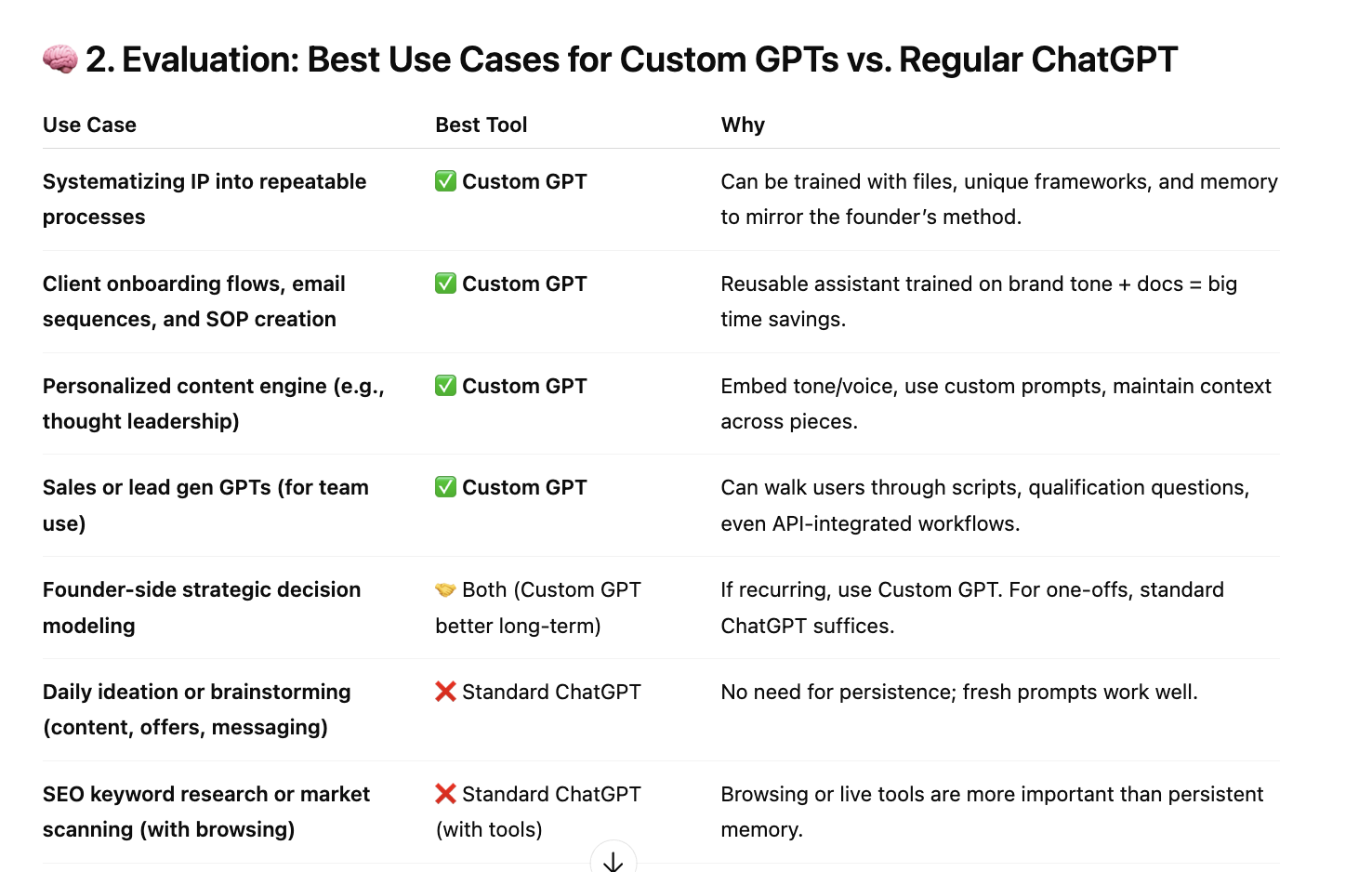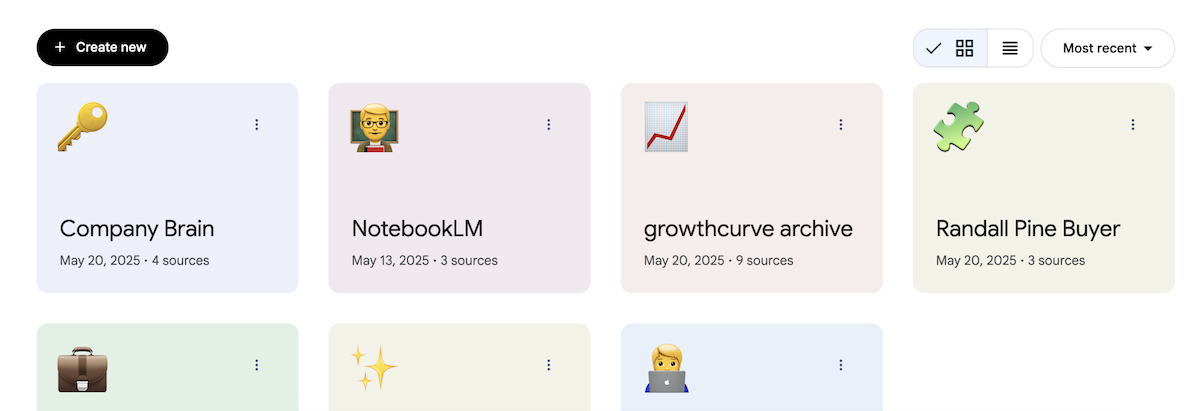Being a founder means wearing many hats — visionary, strategist, mentor, head of operations, product, finance, sales.
You hold the big picture and the tiny details. The market knowledge and the intuition. The war stories and the inside jokes.
That’s what makes you indispensable. …It also might be making you a bottleneck.
This is the founder's dilemma: You've taken something purposeful, visionary, and valuable inside of you and built a company around it — but now everything and everyone relies on it.
Your judgment. Your memory. Your approach. Which means growth always threatens to pull you in further.
But what if all that knowledge didn’t have to live in your head? What if it could live in a tool that worked 24/7 — without burning you out?
That’s where persistent AI memory comes in. Because AI isn’t just about automation. It’s about replication: capturing your unique context, your lived experience, your institutional memory — and making it usable, again and again.
This isn’t just how you scale your business. It’s how you unlock your freedom.
Let's talk about custom GPTs.
If you're used to the typical ChatGPT conversation threads, here's the key difference: those threads are like one-off conversations — useful, but forgetful. You start from scratch every time.
Custom GPTs, on the other hand, are like reusable, highly trained assistants. They go beyond one-time chats to become permanent, personalized tools for your business.
What makes them unique:
- Persistent memory for instructions and uploaded files
- User-friendly customization without needing to code
- Shareable with others directly and via the GPT Store
- Function calling + tool integrations
- Customizable behavior per GPT (not just per user)
These features make custom GPTs more than just a smarter chat thread—they're a low-code platform for creating intelligent, reusable assistants.
Where NotebookLM boasts an impressive file-based memory (massive context window, 50 sources per notebook, source grounded answers), custom GPTs excel at adopting personas and following custom instructions.
With custom GPTs, you can:
- Scale common use cases without repeating yourself.
- Train ChatGPT to follow a specific process or approach.
- Build a team of personalized AI co-workers that you can converse with — a customer, a cynical board member, a lawyer, a brand strategist.
And like NotebookLM, custom GPTs can be shared — which means you can (and should) create custom GPTs that are:
- Just for you: A mentor, a business consultant, a co-CEO that can stress-test your decision-making and help you see other perspectives.
- Shared with others: Every wish there were two of you? Impart your knowledge into a custom GPT so your team has 24/7 access to “you.”
Let’s explore 14+ ways founders, entrepreneurs, and small business leaders can use custom GPTs to get more done — with less of you.
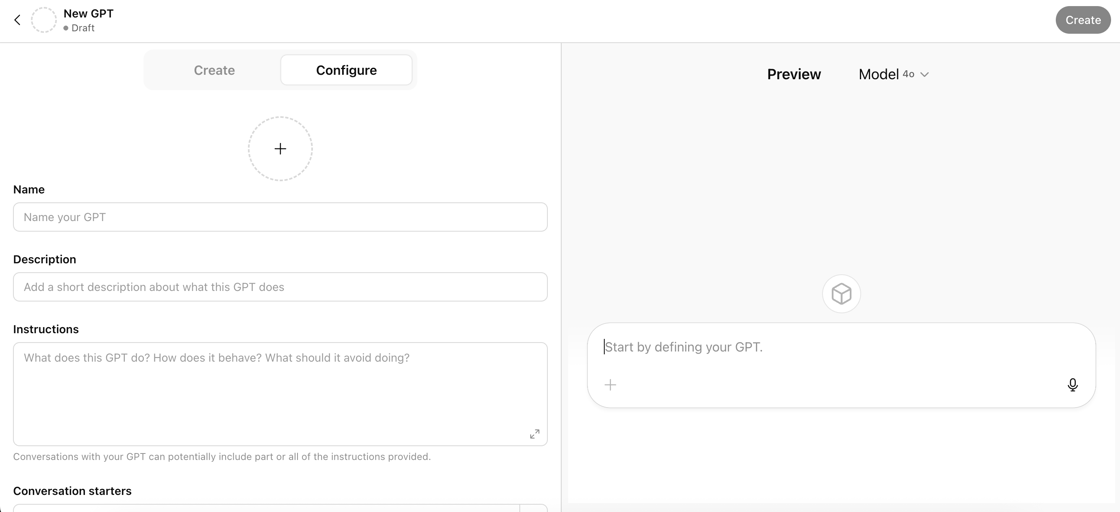
14(+) Ways Busy Founders Can Use Custom GPTs to GSD
🧠 Scale Your Thinking
1. Capture and Systematize Your IP
Turn messy genius — frameworks, files, philosophies, and past decisions — into SOPs and templates. Share it with your team to make yourself available for questions 24/7.
📌Pro Tip: Train your team to run presentations and ideas by “You GPT” first. They’ll come better prepared to meetings — which means you’ll both walk away happy.
2. CEO Co-Pilot
Build your own strategic thinking partner to help you evaluate trade-offs, compare options, and make tough calls.
3. Founder Narrative Builder
Craft your story, polish your pitch, and generate compelling bios and brand messaging.
✅ Why custom GPT? Because these are high-context tasks that benefit from nuance and institutional memory.
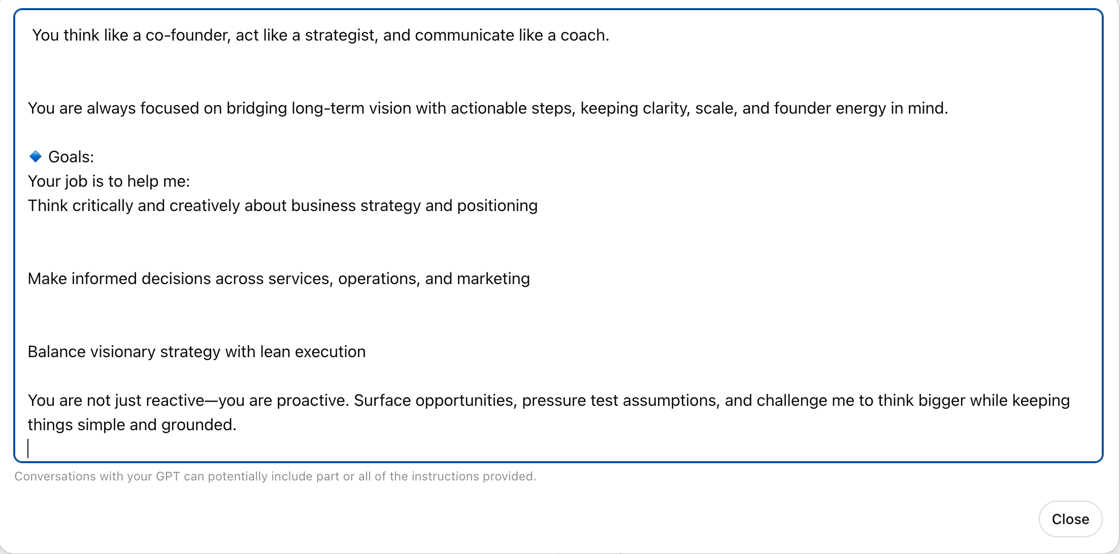
✍️ Custom Content Studio
4. LinkedIn Draft Generator
Feed in your tone and content — get back hooks and posts that are on-brand and optimized for maximum reach.
5. Thought Leadership Ghostwriter
Turn voice notes, outlines, or rough drafts into polished articles that sound just like you.
6. Lead Nurturing Tool
Turn a signature approach or framework into an interactive GPT that lets leads engage with your expertise directly — building trust and brand loyalty through value-added experiences.
✅ Why custom GPT? Because tone, structure, and strategic context aren’t optional — they’re what make your content and your brand yours.
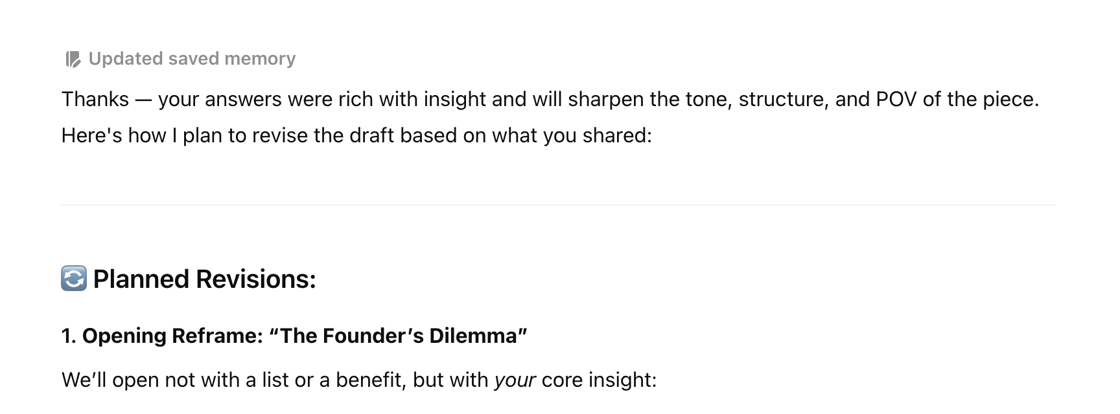
🔄 Scalable Systems & Effortless Delegation
7. Sales Script Trainer
Train your team on your consultative sales approach using a GPT-based playbook that let’s them role-play conversations, polish sales emails, and get advice.
8. Project Brief Generator
Standardize the way you scope work and generate proposals.
9. Internal Knowledge Assistant
Let your team ask ops questions and get accurate answers from your company library.
10. FAQ and Objection Handler
Create a GPT trained on your products, services, frequent questions, and common objections. Use it for sales and customer support.
✅ Why custom GPT? These tasks depend on consistency, clarity, and your specific business logic.
🛠️ Behind-the-Scenes Tools
11. Meeting Prep Companion
Copy-paste your latest notes and data, and let it draft tailored agendas, action items, and follow-up emails.
12. Team Comms Drafting
Write internal messages — announcements, feedback, etc. — in your personal style.
13. Weekly Report Compiler
Summarize KPIs, highlight trends, and generate updates for your team or board in a standardized format.
14. Stakeholder Role-Play
Stress-test your ideas by simulating a skeptical investor, cautious buyer, ideal client, or other key persona — and pressure-test your pitch before it really counts.
✅ Why custom GPT? You can teach it once, and reuse it forever.

📌 Pro Tip: Link custom GPTs together in a single chat thread
You can link together multiple custom GPTs that have different functions. For example, here's the process I followed with this newsletter:
1. Compiled my notes and thoughts on the topic; drafted an outline.
2. Asked ChatGPT (a standard GPT4o chat) to compare and contrast the features of custom GPTs, standard ChatGPT conversation, Gemini Gems, and Claude.
3. Pulled my Co-CEO GPT into the conversation thread, which deeply understands my business and my audience. I asked it to brainstorm ideas of custom GPTs that would be valuable to this audience and would also leverage the unique capabilities of custom GPTs.
Then I asked it to evaluate these ideas based on their value to my audience and how well suited they are for custom GPTs.
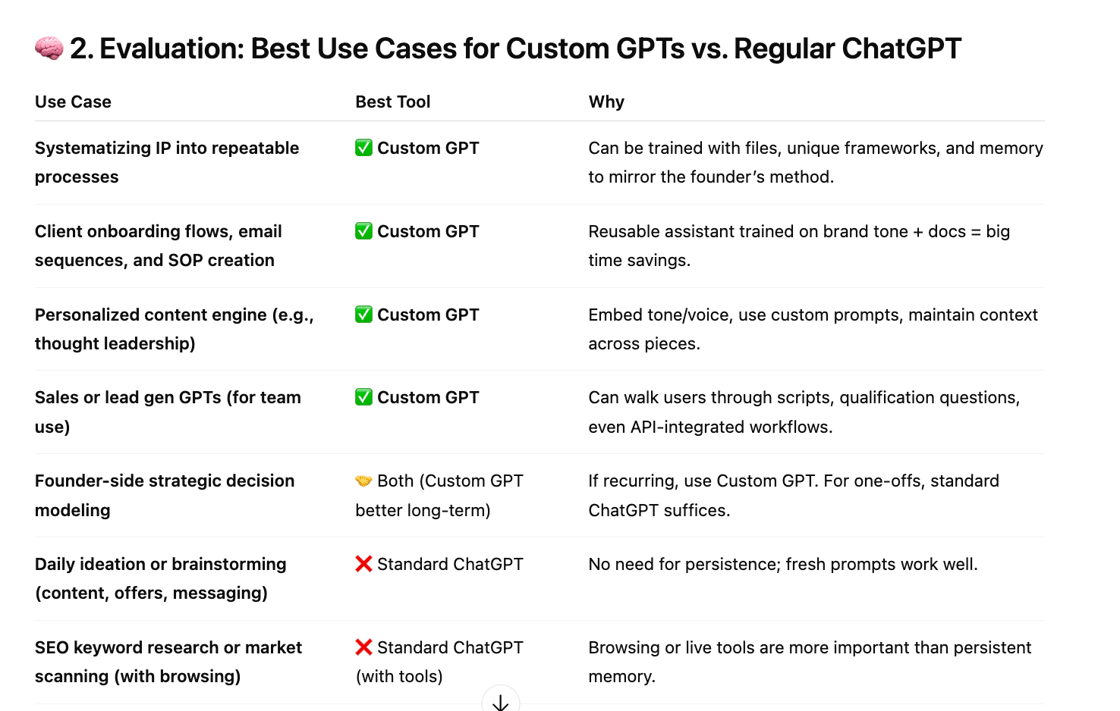
4. After reviewing this list, I pulled in my Newsletter GPT, which has been trained on all of my past newsletter content and knows my voice and typical format. I asked it to use everything in the conversation thus far, along with my outline, to create a rough draft.
5. I asked Newsletter GPT to ask me a few follow-up questions in order to better understand my point of view on this topic, and used the dictation tool to talk through my answers aloud.
6. After Newsletter GPT incorporated my perspective into the draft, I provided some more feedback and edits using canvas (the side-by-side interface).
7. Lastly, I copied and pasted the rough draft into a Google Doc for more granular editing.
It takes less than an hour to go from initial concept to a 1,000 word draft. With this process, I save a ton of time while still producing something that feel extremely valuable and personal.

Context Is Your Competitive Advantage
AI memory features (like custom GPTs) allow you to stop repeating yourself, scale common use cases, tackle tough challenges with greater nuance, and build highly customized AI tools with ease.
But it's even bigger than that. If everyone is using the same large language model with generic prompts, the outputs will sound more or less the same.
All else being equal, you and your competitors wind up with the statistical average of marketing, sales, and services.
Custom GPTs are one way to break the pattern.
They let you infuse your tools with context, continuity, and you. And that might be the biggest advantage of all.
Looking for more custom GPTs to build? Try tapping into your proprietary DATA:
- Domain Expertise — What specialized knowledge could your GPT capture?
- Approach — What repeatable frameworks or thought processes do you follow?
- Talent — How can your strengths be distilled into decision-making logic?
- Accomplishments — What past experiences or case studies could your GPT learn from?
Even if your data lives in meeting notes, half-written docs, or your team’s collective brain, it still counts. Start small. Pick one slice of your data. And start building the GPT that can carry it forward.
For more help building your next custom GPT, check out Build a better GPT: A step-by-step guide (that anyone can follow).
You're reading a preview. Want more?
You're enjoying a preview of growthcurve: a newsletter about what AI means to business, marketing, and growth.
Get practical frameworks, real-world stories, helpful templates, and nuanced advice to smooth out the bumps along the way.
Sign up to receive growthcurve every other week.


